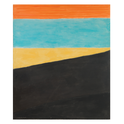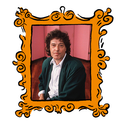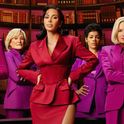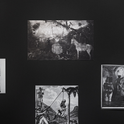As a young man, Terence Davies, director of Distant Voices, Still Lives (1988) and The House of Mirth (2000), went to see Victim, Basil Dearden’s 1961 thriller starring Dirk Bogarde as a judge caught up in a gay blackmail plot. The film, it is said, was the first to contain the word “homosexual”. “You could have heard a feather drop in the cinema—the atmosphere was electric.” Davies once recalled. “That word was never used in England. Never!” Even two decades later, watching the film on television, I felt I was doing something wrong. The same was true of The Killing of Sister George (1968), Sunday Bloody Sunday (1971), My Beautiful Laundrette (1985). Gay cinema—not that such a term really existed—felt furtive, samizdat.
Things are different in 2025. A Bond actor—Daniel Craig—thinks nothing of starring in Luca Guadagnino’s Queer, which is based on a novella by William Burroughs, who once declared, “In the US, you have to be a deviant or die of boredom.” Festivals abound. Magazines—such as the excellent Little Joe—are devoted to the field. Directors including Pedro Almodovar, Todd Haynes and Céline Sciamma have long been consecrated as leading auteurs. Tár (2022), Everything Everywhere All at Once (2022) and Emilia Pérez (2024) are showered with awards. This, for some, is a cultural revolution, a cause for celebration.
Ryan Gilbey, long one of the UK’s most astute and exuberant critics, is not so sure. “Subtext is now text – and greater visibility can feel like a diminished presence,” he writes in his newly published It Used to be Witches: Under the Spell of Queer Cinema. He grew up in Essex in the 1970s and 1980s, a time when “apologetically queer” youngsters like himself would stay up late for Derek Jarman films on Channel 4 or head to London’s gleefully insalubrious Scala to watch forbidden fruit. His book has great range—Indian and Kenyan directors, experimentalists such as Barbara Hammer and Shirley Clarke—and is associative, nonlinear, autofictive: it aims, in its very form, not to be tagged as straight film criticism.
Looking back at his adolescence, Gilbey believes that film “provided a kind of IV line for his queerness”. Intensity and viscerality: the very act of going into a dark screening room is “a queer pursuit with its connotations of transgression, concealment, voyeurism”. He writes, not unaffectionately, of how gay men have used cinemas for sex. At the Biograph (nicknamed the Bio-Grope) in London, war movies were especially popular with regulars as, according to Quentin Crisp, “their soundtracks help to conceal the noise of creaking seat springs”.
It Used to be Witches has a romantic premise. Epigraphed by John Walters—“The world of the heterosexual is a sick and boring life”—it portrays queers as “outside, oppositional, different, wrong, freakish, even criminal”. Their enemies, according to his interviewees, are many: for Andrew Haigh, director of All of Us Strangers (2023), it’s those younger audiences who pine for happy endings and “queer joy”; for Bruce LaBruce (whose work includes Cocky Boys and Sodomise Me), it’s those viewers who fail to appreciate how porn is an “inherently subversive force”. Manifestos, uplift, “positive” representation: these are yesterday’s goals. Says (the director of 2012’s Stud Life, among others) Campbell X: “I don’t see our Ugly, our Banal, our Flawed.”
Are things changing? William Friedkin’s Cruising (1980), starring Al Pacino, was described by a New York critic on its release as “almost a road map on how to kill a gay. It’s a product of the grossest dreams of a reactionary gay-hater”; nowadays, it attracts sold-out crowds in leather getup. Should queer roles go to queer performers? Gilbey reports that directors are more and more sanguine about the identities of their casts: as the director Lyle Kash insists, “Acting involves taking on a subjectivity that isn’t your own”, while Peter Strickland laughs, “The situation has flipped. People are being coy about their sexuality because they don’t want to be found out as straight.”
Gilbey’s book fizzes with ideas and idealism. Filipino filmmaker Isabel Sandoval believes queer cinema “embodies a spirit of adventure, innovation and fearlessness”. Elizabeth Purchell, director of the zesty mashup Ask Any Buddy (2019), suggests trans cinema is all about “taking old material and reframing it or turning it into something new”. I find such claims their own form of tendentious uplift.
I was entertained and provoked by It Used to be Witches, but I finished it wondering if queer cinema—as an oasis, a playground of possibility, an engine of cultural change—remains as important as it once did. People still turn to screens to see and validate themselves, to imagine themselves as something other, to explore their fantasies—but those screens are on their phones, in their pockets.












